

Blog: Natural Language Processing with R Programming Books. Natural Language Processing is a key Data Science skill.
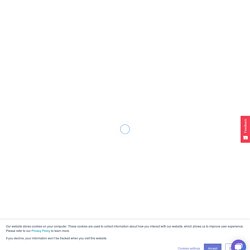
Learn how to can expand your R programming knowledge with Text Analytics. It is my firm conviction that Natural Language Processing/Text Analytics is a must-have skill for any practicing Data Scientist. From analyzing customer feedback in NSAT surveys to scraping Microsoft’s internal job postings for analyzing popular technical skills, to segmenting customers via textual features, I have universally found that Text Analytics is a wildly useful skill.
Not surprisingly, I am often asked by students of our Bootcamp, folks that I mentor on Data Science and my LinkedIn contacts about the subject of Text Analytics. The good news is that there are many great resources for the R programmer to learn Text Analytics. HathiTrust Research Center - Text Mining & Computational Text Analysis - Library Guides at UC Berkeley. Youtube. Fall2019 LibCurriculum. Fulltext manual. An R package to search across and get full text for journal articles The fulltext package makes it easy to do text-mining by supporting the following steps: Search for articlesFetch articlesGet links for full text articles (xml, pdf)Extract text from articles / convert formatsCollect bits of articles that you actually needDownload supplementary materials from papers.
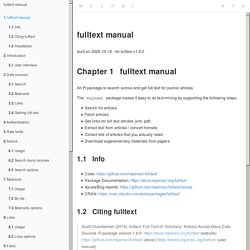
Text Analysis with R. It is recommended that you not only intall, but also load the packages, to make sure the respective versions get along with your R version.
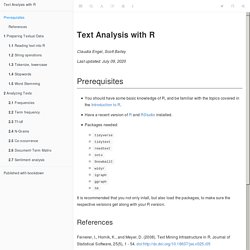
Feinerer, I., Hornik, K., and Meyer, D. (2008). Text Mining Infrastructure in R. Journal of Statistical Software, 25(5), 1 - 54. doi: Youtube. What’s the most positive or negative religion? — Sentiment and Data Analysis of Holy Books with R. Wikileaks: a diez años del sismo político del Cablegate, EE. UU. sigue en la mira. La noticia cayó como un rayo el 28 de noviembre de 2010.
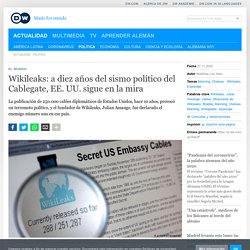
Cinco importantes medios occidentales comenzaron a publicar simultáneamente secretos de la sala de máquinas de la diplomacia de Washington. El material: exactamente 251.287 documentos, en su mayoría secretos y confidenciales, del Departamento de Estado de la superpotencia, que ofrecían una imagen sin adornos de la política exterior estadounidense en documentos provenientes de embajadas estadounidenses en todo el mundo.
La plataforma Wikileaks los hizo accesibles. Nunca antes habían caído tantos secretos a la vez en manos de los periodistas. El socio alemán de Wikileaks fue la revista Der Spiegel, que se refirió a una "catástrofe mayúscula” para la política exterior de Estados Unidos". MonkeyLearn - Text Mining: The Beginner's Guide. What is Text Mining?
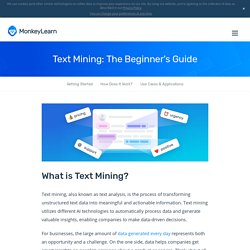
Text mining, also known as text analysis, is the process of transforming unstructured text data into meaningful and actionable information. Text mining utilizes different AI technologies to automatically process data and generate valuable insights, enabling companies to make data-driven decisions. For businesses, the large amount of data generated every day represents both an opportunity and a challenge. On the one side, data helps companies get smart insights on people’s opinions about a product or service. Categorización de conflictos sociales en el ámbito de los recursos naturales: un estudio de las actividades extractivas mediante la minería de textos.
Mediante la aplicación de técnicas de minería de textos, se desarrolló una metodología para medir el número de conflictos sociales relacionados con la explotación de recursos naturales no renovables.
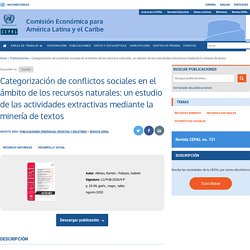
Técnicas de Procesamiento del Lenguaje Natural en la Recuperación de Información. Transkribus. Disclaimer Offenlegung nach § 25 des österreichischen Mediengesetzes. The Classical Language Toolkit. OCR4all : software de reconocimiento de texto de código abierto de documentos históricos. OCR4all.
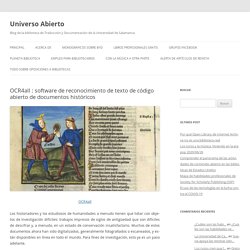
PLOS Collections: Article collections published by the Public Library of Science. Getting Started with Text Preprocessing for Machine Learning & NLP. Based on some recent conversations, I realized that text preprocessing is a severely overlooked topic.
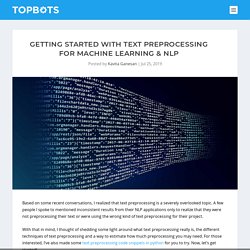
A few people I spoke to mentioned inconsistent results from their NLP applications only to realize that they were not preprocessing their text or were using the wrong kind of text preprocessing for their project. Machine learning has been used to automatically translate long-lost languages. The other script, Linear B, is more recent, appearing only after 1400 BCE, when the island was conquered by Mycenaeans from the Greek mainland.
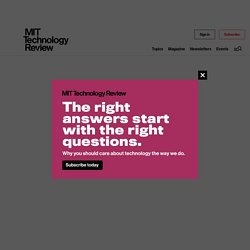
Evans and others tried for many years to decipher the ancient scripts, but the lost languages resisted all attempts. The problem remained unsolved until 1953, when an amateur linguist named Michael Ventris cracked the code for Linear B. His solution was built on two decisive breakthroughs. First, Ventris conjectured that many of the repeated words in the Linear B vocabulary were names of places on the island of Crete. That turned out to be correct. His second breakthrough was to assume that the writing recorded an early form of ancient Greek. Ventris’s work was a huge achievement. It’s not hard to imagine that recent advances in machine translation might help. Enter Jiaming Luo and Regina Barzilay from MIT and Yuan Cao from Google’s AI lab in Mountain View, California. First some background. La estilometría – UniCo. 03 Abr ¿Qué es la estilometría?
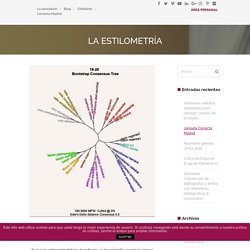
Using Data to Find the Angriest Death Grips Song. Text analysis, wordcount, keyword density analyzer, prominence analysis. Stylometry with R: A Package for Computational Text Analysis. McKee Ch1. Introduction to Text Analytics with R: Overview. Text Mining with R. In text mining, we often have collections of documents, such as blog posts or news articles, that we’d like to divide into natural groups so that we can understand them separately. Topic modeling is a method for unsupervised classification of such documents, similar to clustering on numeric data, which finds natural groups of items even when we’re not sure what we’re looking for. Latent Dirichlet allocation (LDA) is a particularly popular method for fitting a topic model. It treats each document as a mixture of topics, and each topic as a mixture of words.
This allows documents to “overlap” each other in terms of content, rather than being separated into discrete groups, in a way that mirrors typical use of natural language. As Figure 6.1 shows, we can use tidy text principles to approach topic modeling with the same set of tidy tools we’ve used throughout this book. Latent Dirichlet allocation Latent Dirichlet allocation is one of the most common algorithms for topic modeling. R Programming/Text Processing. This page includes all the material you need to deal with strings in R. The section on regular expressions may be useful to understand the rest of the page, even if it is not necessary if you only need to perform some simple tasks. This page may be useful to : perform statistical text analysis.collect data from an unformatted text file.deal with character variables.
In this page, we learn how to read a text file and how to use R functions for characters. There are two kind of function for characters, simple functions and regular expressions. Help.search(keyword = "character", package = "base") Text Mining with R [Book] R’s tidytext turns messy text into valuable insight.
“Many of us who work in analytical fields are not trained in even simple interpretation of natural language,” write Julia Silge, Ph.D., and David Robinson, Ph.D., in their newly released book Text Mining with R: A tidy approach. The applications of text mining are numerous and varied, though; sentiment analysis can assess the emotional content of text, frequency measurements can identify a document’s most important terms, analysis can explore relationships and connections between words, and topic modeling can classify and cluster similar documents. I recently caught up with Silge and Robinson to discuss how they’re using text mining on job postings at Stack Overflow, some of the challenges and best practices they’ve experienced when mining text, and how their tidytext package for R aims to make text analysis both easy and informative.
Let’s start with the basics. Linguistic Inquiry and Word Count. Laurence Anthony's Software. FireAnt (Filter, Identify, Report, and Export Analysis Toolkit) is a freeware social media and data analysis toolkit with built-in visualization tools including time-series, geo-position (map), and network (graph) plotting. [FireAnt Homepage] [Screenshots] [Help] PayPal Donations and Patreon Supporters: Click one of the following if you want to make a small donation to support the future development of this tool. A Statistical Analysis of the Work of Bob Ross. Bob Ross was a consummate teacher. He guided fans along as he painted “happy trees,” “almighty mountains” and “fluffy clouds” over the course of his 11-year television career on his PBS show, “The Joy of Painting.” In total, Ross painted 381 works on the show, relying on a distinct set of elements, scenes and themes, and thereby providing thousands of data points.
I decided to use that data to teach something myself: the important statistical concepts of conditional probability and clustering, as well as a lesson on the limitations of data. So let’s perm out our hair and get ready to create some happy spreadsheets! More Culture What I found — through data analysis and an interview with one of Ross’s closest collaborators — was a body of work that was defined by consistency and a fundamentally personal ideal. I analyzed the data to find out exactly what Ross, who died in 1995, painted for more than a decade on TV. Conditional probability can be a bit tricky. What about footy little hills? Stanford Literary Lab. Humanities Data in R. Discourse analysis. Discourse analysis (DA), or discourse studies, is a general term for a number of approaches to analyze written, vocal, or sign language use, or any significant semiotic event. Discourse analysis has been taken up in a variety of social science disciplines, including linguistics, education, sociology, anthropology, social work, cognitive psychology, social psychology, area studies, cultural studies, international relations, human geography, communication studies, and translation studies, each of which is subject to its own assumptions, dimensions of analysis, and methodologies.
Topics of interest[edit] Topics of discourse analysis include:[citation needed] Political discourse[edit] Political discourse analysis is a field of discourse analysis which focuses on discourse in political forums (such as debates, speeches, and hearings) as the phenomenon of interest. History[edit] Although the ancient Greeks (among others) had much to say on discourse, some scholars[which?] Perspectives[edit] Text analysis, wordcount, keyword density analyzer, prominence analysis. Statistical Methods for Studying Literature Using R. R is a powerful programing language for statistical analysis and visualization that can be broadly used for many applications in the digital humanities. As with any programming language, getting started with R involves a steep initial learning curve in order to produce useful results. In its current form, this blog contains the notes from a hands-on workshop that I initially ran at the University of Kansas's Digital Humanities Forum/THATCamp Representing Knowledge in the Digital Humanities in September of 2011 and expanded with a more literary focus at the (University of Kansas 2012 Digital Humanities Forum).
It was further revised for an additional workshop at the University of Iowa Oberman Center for Advanced Study in the fall of 2014. The examples are based on three different data sets. Intro To Text Analysis With R. Guest post by Christopher Johnson from www.codeitmagazine.com One of the most powerful aspects of using R is that you can download free packages for so many tools and types of analysis. Text analysis is still somewhat in its infancy, but is very promising. » Text Analysis with R for Students of Literature Matthew L. Jockers. Text Analysis with R for Students of Literature provides a practical introduction to computational text analysis using the open source programming language R. Readers begin working with text right away and each chapter works through a new technique or process such that readers gain a broad exposure to core R procedures and a basic understanding of the possibilities of computational text analysis at both the micro and macro scale.
View the Book Flyer [pdf 1.4MB] Introduction to the RStudio Programming Environment [Video]. “This is a well written book on the topic of Text Analysis. There is enough information to give you a good start using R. “This book is an essential resource for anyone who wants to study literature using computational methods.” Text Analyzer - Text analysis Tool - Counts Frequencies of Words, Characters, Sentences and Syllables. TAPoR: Text Analysis Tools. Romancing the Novel: Large Scale Text Analysis in the Humanities (by Mark Algee-Hewitt) Large-Scale Text Analysis with R - HILT 2015. Searching; Visualized: “The Book History Bibliograph”
Automated Data Collection with R: A Practical Guide to Web Scraping and Text ... - Simon Munzert, Christian Rubba, Peter Meißner, Dominic Nyhuis - Google Books. Text Analysis with R for Students of Literature.